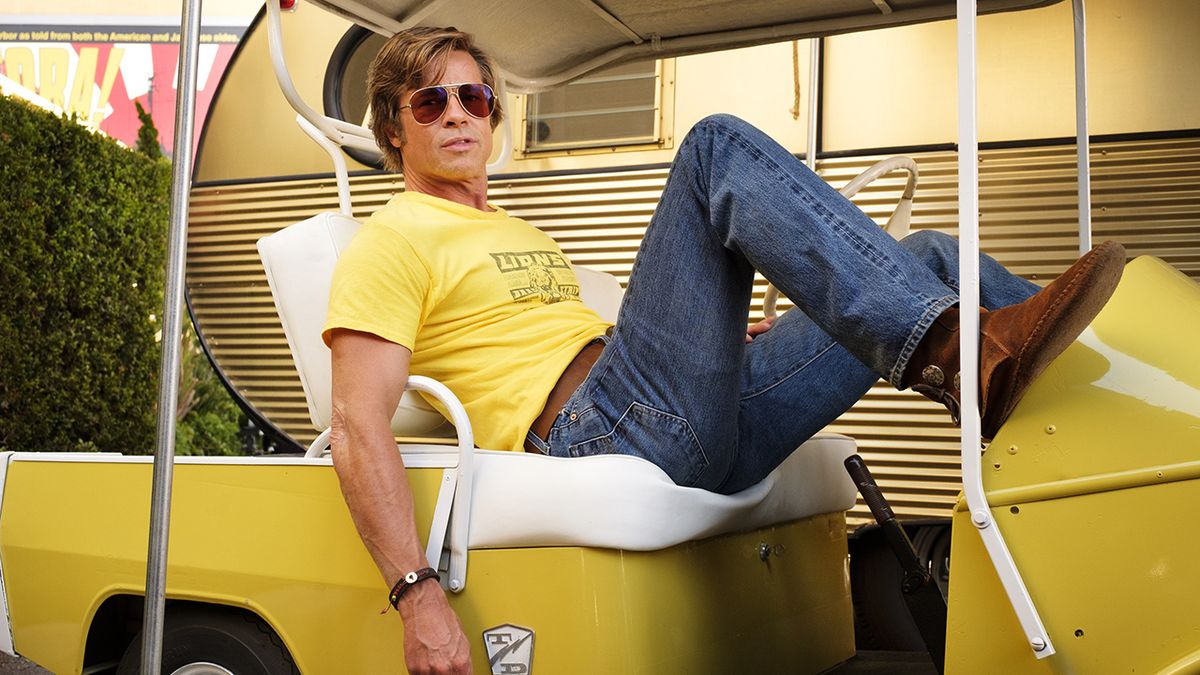Once Upon a Time in Hollywood ending explained: How Tarantino's movie compares to real-life events
Exploring the Manson Family, Sharon Tate, and the flamethrower

Stop for a second. Take a deep breath. That Once Upon a Time in Hollywood ending certainly got the adrenaline pumping.
Warning: spoilers for Once Upon a Time in Hollywood ahead. For those wishing to see the movie unspoilt, bookmark this page and come back when you have seen the new movie.
Quentin Tarantino’s ninth movie, much like many of his works, left things open for interpretation and discussion, the ambiguous closer festering in the minds of many cinemagoers for hours after viewing. However, if you haven’t brushed up on your 1960s serial killers and the true tale of Sharon Tate, things may have been doubly head-scratching.
So, let’s clear all that up. Here’s a breakdown of the Once Upon a Time in Hollywood ending and how the love letter to Hollywood’s Golden Age was both inspired by (and ultimately deviated from) the real-life Manson Murders.
Once Upon a Time in Hollywood ending: what happens in the final scenes

Having returned from a brief career as a Spaghetti Western star in Europe (complete with unhappy Italian wife in tow), Rick Dalton (Leonardo DiCaprio) breaks the news to his stunt double Cliff (Brad Pitt) that he’ll no longer be able to afford his services. The pair go out for a night on the town and get very, very drunk. Meanwhile, in the house neighbouring Rick’s, a heavily-pregnant Sharon Tate (played by Margot Robbie), two friends, and her former partner, Jay, are enjoying a meal.
Rick and Cliff head back to Rick’s home in the hills. Cliff decides to take the acid cigarette he bought months ago and walks his dog. Rick, meanwhile, makes frozen margaritas, deciding the party is far from over/
Then the tension begins. Tex and other members of the Manson Family, last seen on the Spahn Ranch, drive up to the road outside Rick’s house, but are shouted away by Rick. They drive off but decide to come back later to kill Rick. At that moment, Cliff returns, the Manson family burst in, but the rough-and-ready stuntman fights most of them off.
Sign up for the Total Film Newsletter
Bringing all the latest movie news, features, and reviews to your inbox
The Manson Family have the upper hand until Cliff’s dog joins the action – grabbing the testicles of Tex – and helping Cliff kill Dakota Fanning’s Squeaky in one particularly gruesome head-bashing scene. The final Manson Family member crashes through the plate-glass window leading to the pool, where Rick is lounging. Rick responds by retreating to his shed and picking up a flamethrower, a prop from the World War 2 movie shown earlier in the film, and burns the woman alive.
The emergency services arrive and, though Cliff is shaken, is escorted safely to the hospital. Rick surveys the scene and is then called over by his next-door neighbour, Jay. Rick explains the situation and reveals how he was almost killed. Sharon interjects via the intercom and invites Rick in to tell the story over drinks. The camera pans out, the title ‘Once Upon a Time… in Hollywood’ is shown on the screen, and we cut to the credits.
Once Upon a Time in Hollywood ending: the biggest questions

How does it compare to real-life events?
Unless you have a passing knowledge of actress Sharon Tate, you may not know that Once Upon a Time in Hollywood’s final act is an alternate version of the real-life events that played out on August 8, 1969).
The initial part of the ending is the same as what actually happened: four members of the Manson Family – a group of cultists headed up by killer Charles Manson – were told by their leader to kill anyone currently living in the house of Terry Melcher, a record producer who refused Manson a contract some years prior.
However, in reality, the group – consisting of Tex Watson, Susan Atkins, Linda Kasabian, and Patricia Krenwinkel – broke into the Tate residence of 10050 Cielo Drive and killed everyone inside, including Tate, who was nearly nine months pregnant.
The fallout from the incident did not, as the movie portrayed, involve the gratuitous deaths of the Manson Family members involved. The quartet (and Manson) were eventually arrested by late 1969 and sentenced to death, later reduced to life imprisonment upon appeal. Manson died in 2017.
To clarify: Rick and Cliff are both fictional characters created by Tarantino, and were not next door neighbours to Sharon Tate. Instead, it was a chilling massacre that shocked America to its core and made Manson live on in infamy and pop culture, long after the attacks occurred. No flamethrowers were used.
For more required reading on the Tate Murders, it’s worth picking up a copy of Helter Skelter by Vincent Bugliosi.
Who is Sharon Tate?
If you were nott aware of who Sharon Tate was before watching the movie, you may have been left wondering why she was such a prominent part of Once Upon a Time in Hollywood, yet had no role to play in any of its climactic scenes.
Tate was a Hollywood actress famed for her ‘ditzy’ but glamorous roles in Valley of the Dolls and Don’t Make Waves. She’s unfortunately now best known for being murdered by the Manson Family.
Where did the flamethrower come from?
Rick kept it as a memento from his time on fictional 1964 film The 14 Fists of McCluskey, itself inspired by director Roger Corman’s war movie The Secret Invasion. You can see the flamethrower in Rick’s shed very briefly earlier in the movie at the moment where Cliff is getting some tools before fixing the roof.
What does the final scene mean?
The Once Upon a Time in Hollywood ending could be the most hotly-debated of all of Tarantino’s finales. It acts as a complete detour of real-life events and wish fulfilment-of-sorts on Tarantino’s part. In the director’s version of events, the actress lives, the Manson Family get brutally murdered in a moment of fist-pumping elation, and Rick gets a new avenue for his faltering Hollywood career to take off as he’ll imminently be introduced to director Roman Polanski. (Of course, Tarantino has altered real-life events before, having Hitler die in a cinema explosion in Inglourious Basterds.)
If you don’t know your history, but are still familiar with Tarantino’s films, it can still be read as an upbeat, though slightly odd ending. Revenge fantasy has always acted as a throughline in much of Tarantino’s work and that’s the case again here. This time, though, it’s an alteration (an alternate universe, if you will) of what actually happened in the real-world that provides the relief of the villains getting their comeuppance.
Think Bill in Kill Bill, DiCaprio’s Calvin Candie in Django Unchained, and now the Manson Family – with the added caveat that the audience are meant to believe that Sharon Tate will die before the credits roll. The payoff is so great because expectations are subverted and capped off in truly thrilling fashion, filled with guts, gore, and a killer soundtrack. It’s Tarantino to the core, and it’s an ending that will keep the audience talking for weeks to come.
For more from the mind of one of the most acclaimed directors around, check out our list of the best Quentin Tarantino movies.
I'm the Senior Entertainment Writer here at 12DOVE, focusing on news, features, and interviews with some of the biggest names in film and TV. On-site, you'll find me marveling at Marvel and providing analysis and room temperature takes on the newest films, Star Wars and, of course, anime. Outside of GR, I love getting lost in a good 100-hour JRPG, Warzone, and kicking back on the (virtual) field with Football Manager. My work has also been featured in OPM, FourFourTwo, and Game Revolution.
Most Popular


